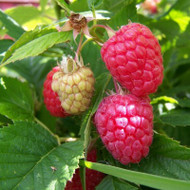In this third and final part of our beginner’s guide to growing fruit, I’m going to look at probably the easiest and most rewarding selection of plants -soft fruit. Currants and berries are where most people start their fruit-growing journey, as rewards they offer far outweigh the minimal amount of effort required to grow them. They are much less daunting for the novice in terms of pruning and maintenance, and they are also normally much cheaper than the cost of an apple or pear tree. They take up less space and most can be very easily grown in pots on a patio or balcony. For a few pounds you can readily get started growing strawberries or currants, and as the life expectancy of most soft fruit is a lot shorter than a top fruit tree, it doesn’t seem like such a commitment- if it fails (and it really won’t), you haven’t wasted too much time and money. So, think of growing soft fruit as a gateway drug, an introduction to the wonderful world of growing your own fruit.
We’ve got a lot of ground to cover this month, so rather than an in depth look at each plant and their specific needs, I’m going to give a brief introduction and a beginners rating - how suitable each one is for a complete novice. I’ll also try and pick out one or two of the best varieties to look out for, and give you my top tip for a successful crop.
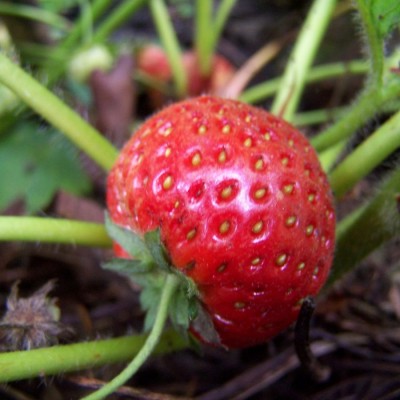
Strawberries
Beginner rating: 10 out of 10
The best way to start growing fruit by far - the plants are cheap to buy, you can easily grow in a pot or container, and you don’t have to wait long for the first crop. The best bit is the flavour - there is little to compare to the thrill of picking your first home-grown strawberry, perfectly ripe and warmed by the morning sun. They even produce new young plants in autumn - ‘runners’ - which you can pot up as free replacements (although it is worth buying fresh virus-free plants from a reputable nursery every 6 years or so).
Recommended varieties: Marshmellow and Sweetheart are two of the best for cropping and flavour. Or try an everbearing type such as Flamenco, which will produce a few fruits for a long period over the summer, rather than lots all in one go.
Top tip. Sun. And then more sun. Strawberries just won’t do well in a shady site - the sugars will not form in the fruit. They also like good drainage, so add a little grit or washed sand before planting if your soil is heavy. The best tip is to mulch the plants (Strulch is fantastic) just as the fruits start to form. Not only will this deter slugs, it will also keep moisture levels even and stop the fruit splitting.
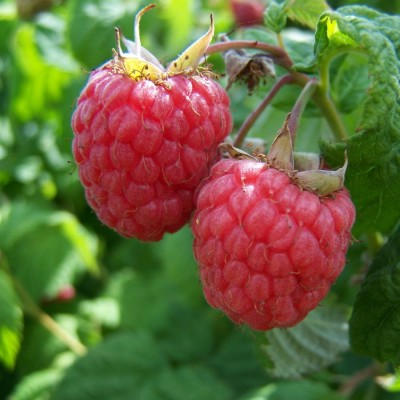
Raspberries
Beginner rating: 6 out of 10
The second most popular choice, but actually slightly trickier for the complete beginner. They take up a fair amount of space and don’t do well in pots, and there are two types with different pruning regimes - summer and autumn fruiting - which can be confusing. If you have room, they are undemanding plants to grow, needing only a cool moist root run, and they do crop heavily.
Recommended varieties: for a summer crop, Glen Ample is an old favourite which does very well in most sites. Malling Juno is a new variety which is well worth trying, the flavour is fantastic. For autumn crops, try Paris - huge crops and super tasty.
Top tip. Autumn fruiting varieties are the easiest to grow, and will also crop the first year after planting. The normal advice is to prune the canes back to soil level after you have picked the fruit, but if you leave some canes untouched, they will produce a small bonus crop the following summer - great if you only have room for one variety and want to extend the season.
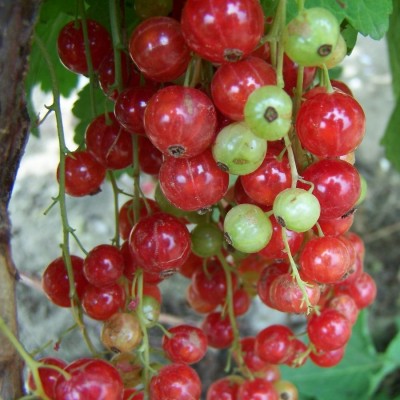
Redcurrants, whitecurrants and gooseberries
Beginner rating: 8 out of 10
I’ve grouped these three together for a couple of reasons. They all grow the same way, on small bushes with a permanent branch structure which produces fruit year after year. Plus they will all tolerate some shade, so good for the trickier areas of your garden. All three are much underrated and should be more widely grown, they are some of the least demanding plants to grow and the fruit from all three is extremely versatile, don’t just think of redcurrant jelly - you can add to all sorts of puddings and savoury dishes.
Recommended varieties: redcurrant Red Lake is one of the most reliable to crop. For whitecurrants, White Grape is an old favourite, although the heritage French variety Bar Le Duc is worth seeking out for the very best flavour. The Finnish-bred Hinnonmaki series of gooseberries are the easiest to grow, with excellent disease resistance. The red form is probably the sweetest. Alternatively look for Leveller, an old favourite that is hard to beat for taste.

Blackcurrants
Beginner rating: 9 out of 10
I’d put these up there with strawberries in terms of beginner - friendliness. One plant won’t cost much, and they’ll produce a lot of fruit. They have a short shelf life so are hard to find in the shops, but are an amazingly versatile fruit in the kitchen. They produce fruit on one year old wood, so you are constantly trying to encourage new growth for future crops, and pruning out any old stems once they have fruited (much easier than I have made it sound!). They don’t do well in pots, but are very happy in heavy soils and will tolerate some shade.
Recommended varieties: Ben Sarek is the best for most gardens, as it is compact in growth but the fruit is quite large. Malling Jet is my personal favourite, slightly later to crop and the fruit is the sweetest of all blackcurrants.
Top tip. Plant quite deep, almost burying the crown, this encourages new shoots for heavier crops next year. This is one of the few fruit bushes that responds well to mulching with homemade compost or well-rotted manure.
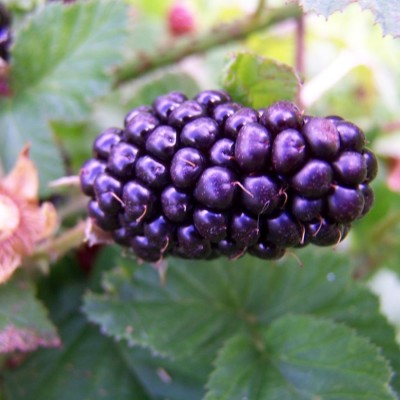
Blackberries and hybrid berries
Beginner rating: 6 out of 10
Whilst there’s nothing particularly tricky about blackberries, they can take up quite a lot of valuable space. The other option is to fan-train them against a fence or wall, but this can be a bit fiddly. They also fruit on one year old wood, so prune out any canes once they have fruited, leaving just new growth which will fruit the following year. On the plus side, there have been many good varieties introduced over recent years, so there are lots of options which are thornless and crop heavily. And Blackberry and Apple Crumble is surely the finest of all desserts, so it’s definitely worth finding room if you can.
Recommended varieties. If you want to create a large, burglar - proof barrier, go for Himalayan Giant. The thorns are vicious and it is a brute of a plant, but the flavour is exceptional. For a better-behaved plant, choose Triple Crown. Thorn free, upright growth which is easy to train, and top-quality fruit.
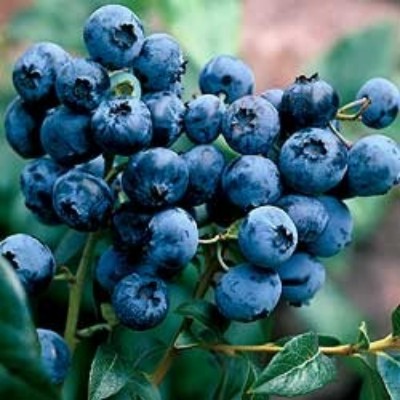
Blueberries
Beginner rating: 8 out of 10
About ten years ago, blueberries were the latest trendy superfood and everyone’s must-have plant. Although this interest has subsequently waned, they remain near the top of any list of fruit suitable for a novice. The fruit is delicious and very healthy, the plants suffer from almost no pests or diseases, need almost no pruning and they do very well in pots. Yes, they need acidic soil, so if in doubt grow in pots and use ericaceous compost.
Recommended varieties. Bluecrop is still the one to beat in terms of yield, but Rubel has possibly the finest flavour. If space is at a premium, try Northland which is more compact.
Top tip. Blueberries aren’t reliably self-fertile, so plant two to get the best crops. Use rainwater to water if possible, as it is softer and helps keep the soil acidity levels down. A dose of tomato fertiliser in early summer will help fruit ripen and improve the flavour.

